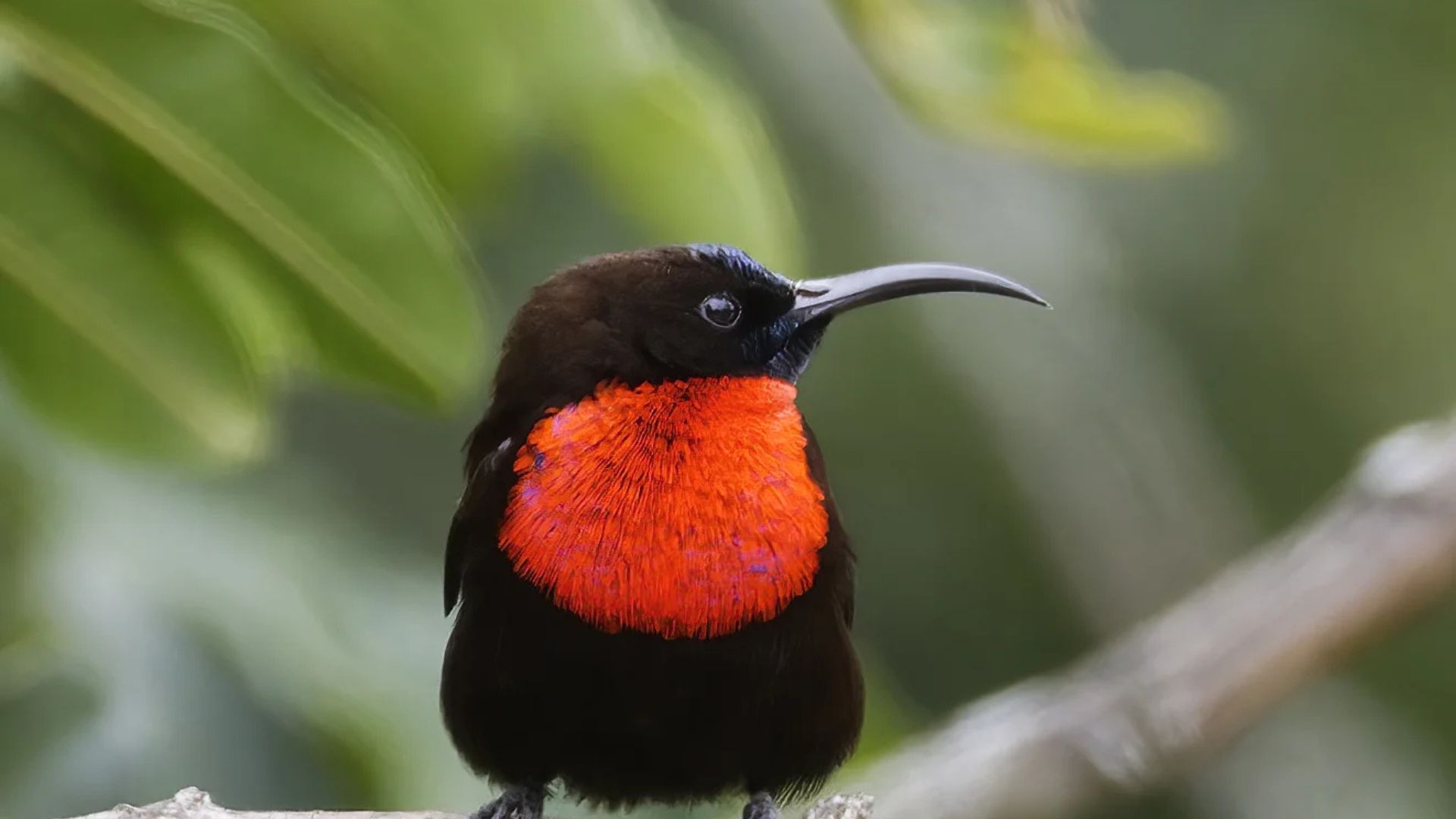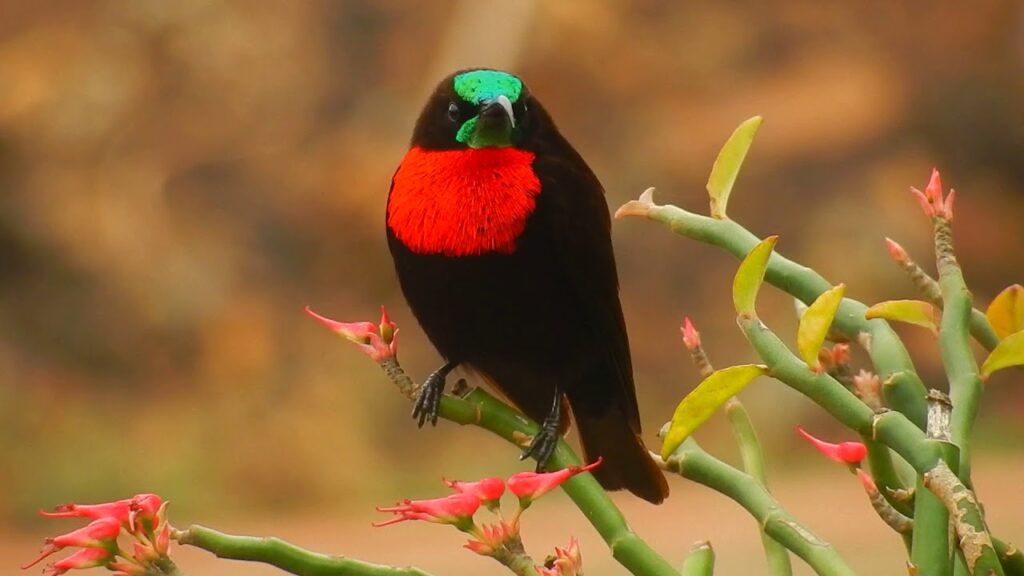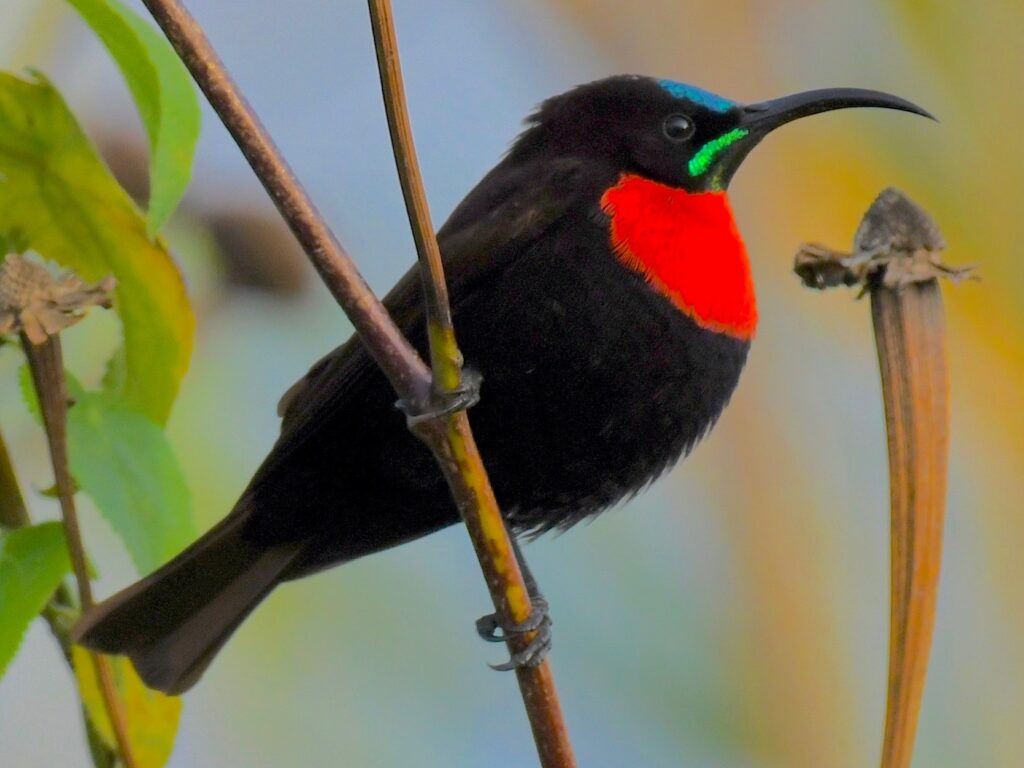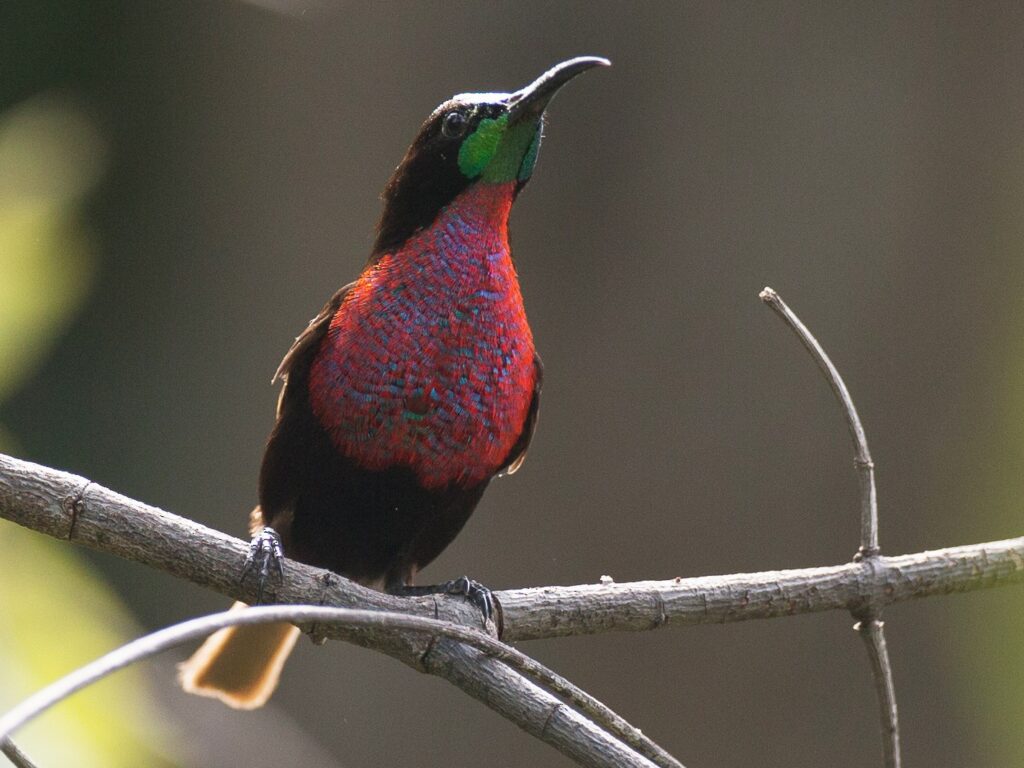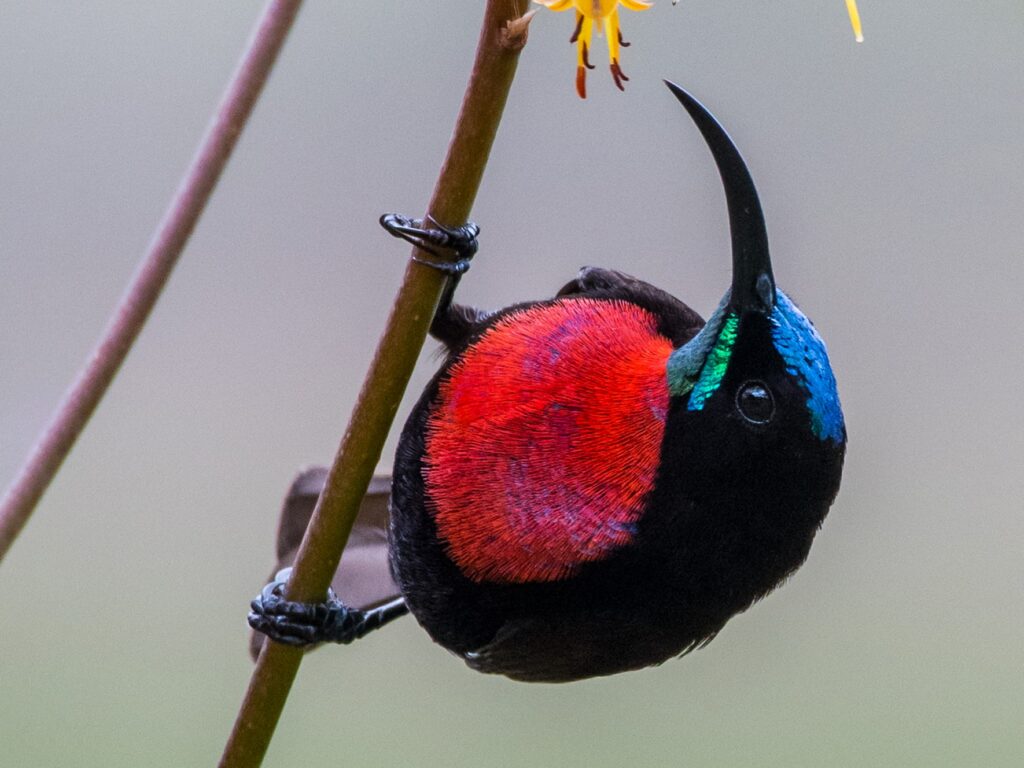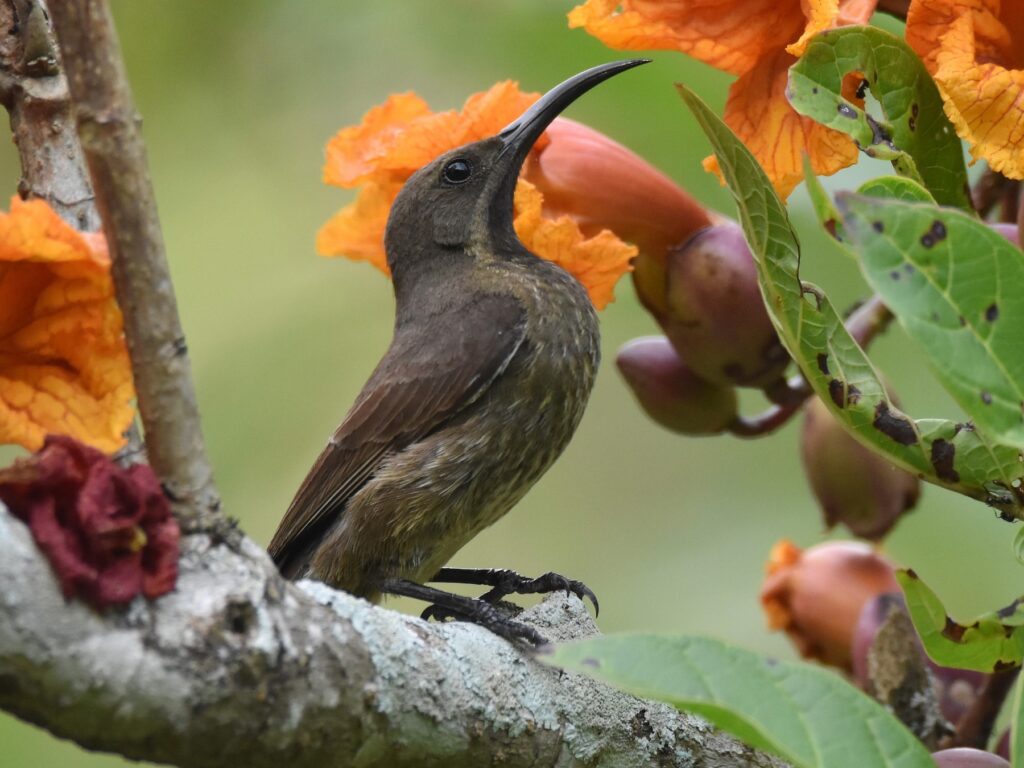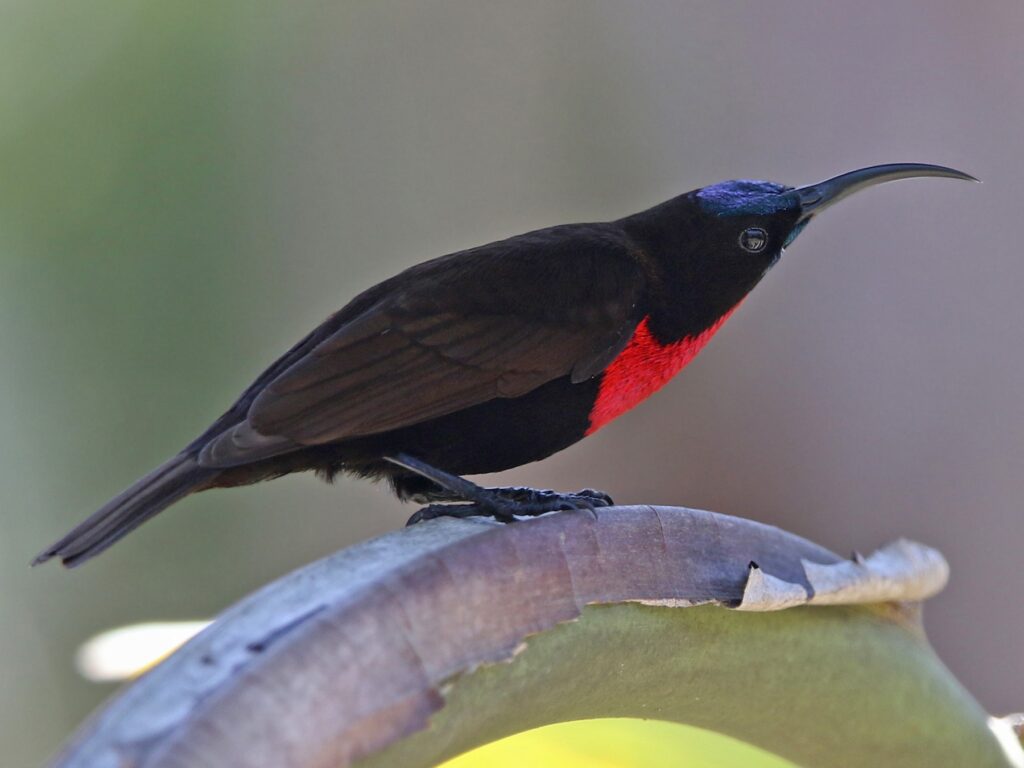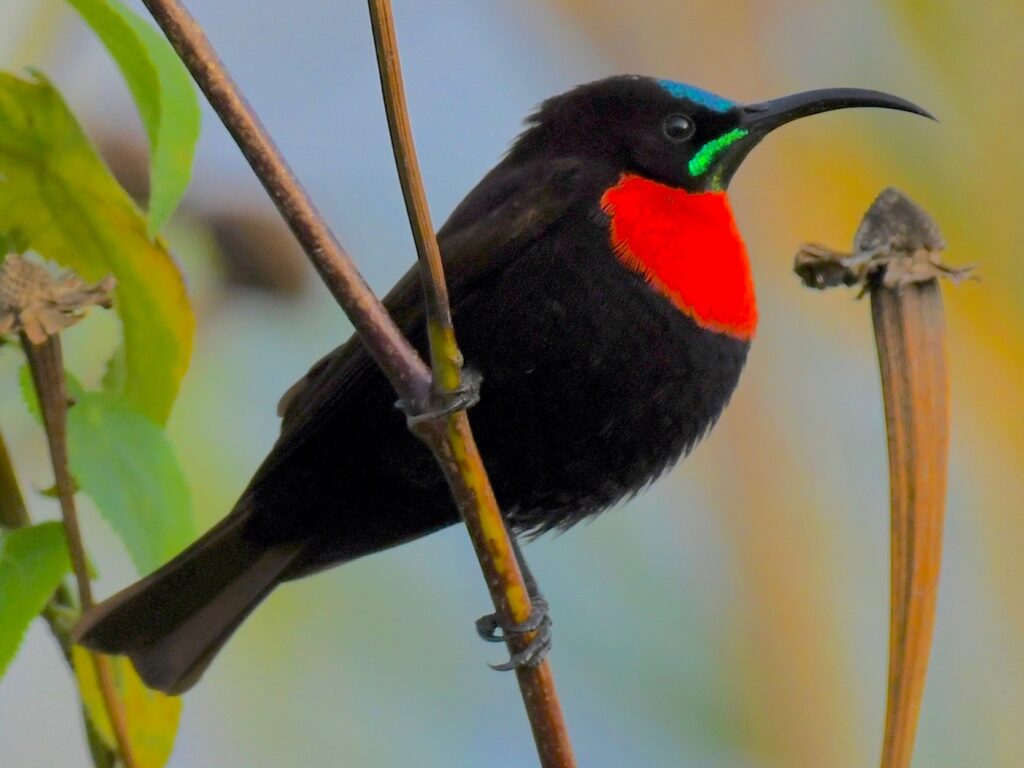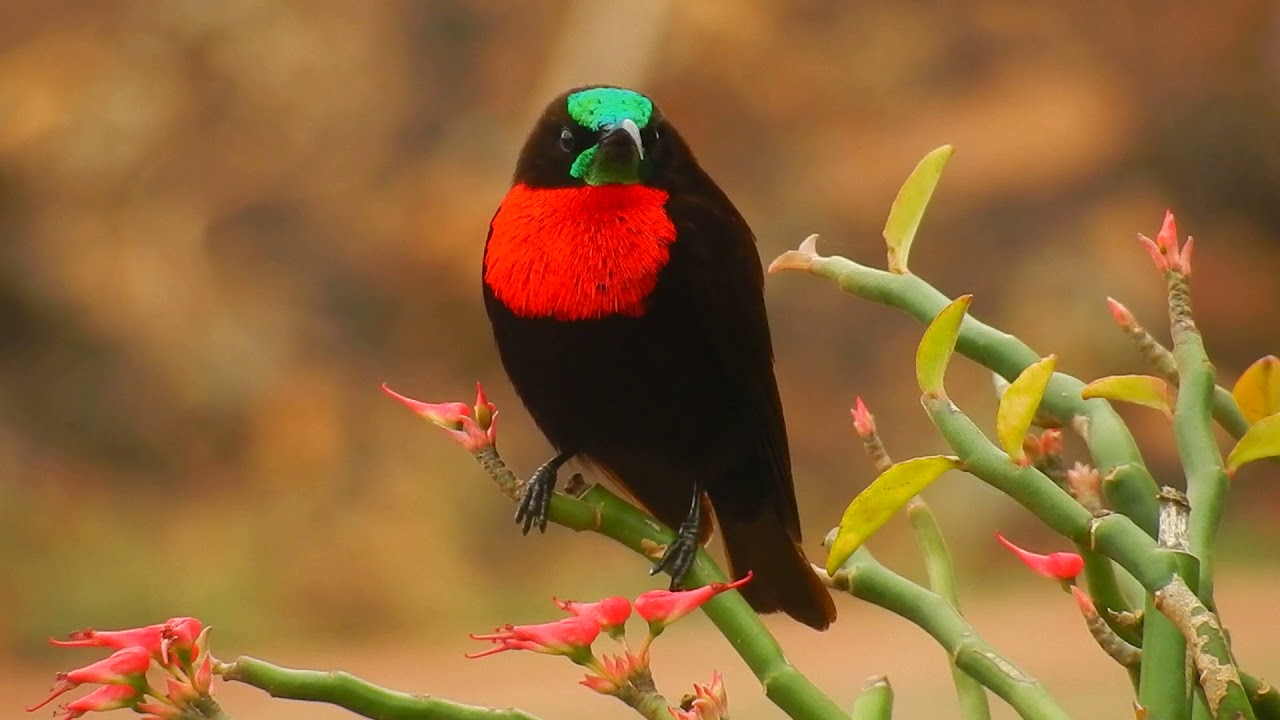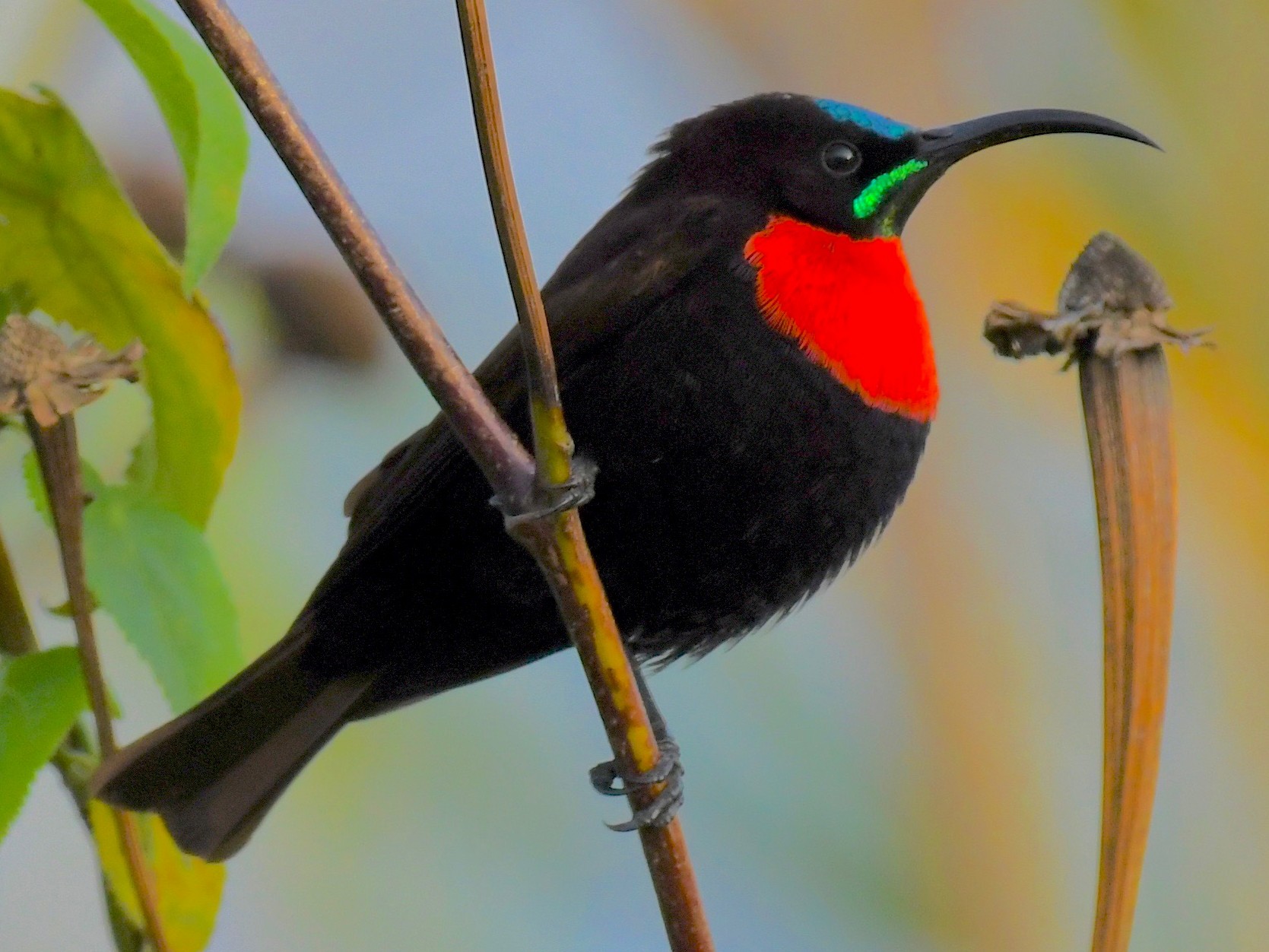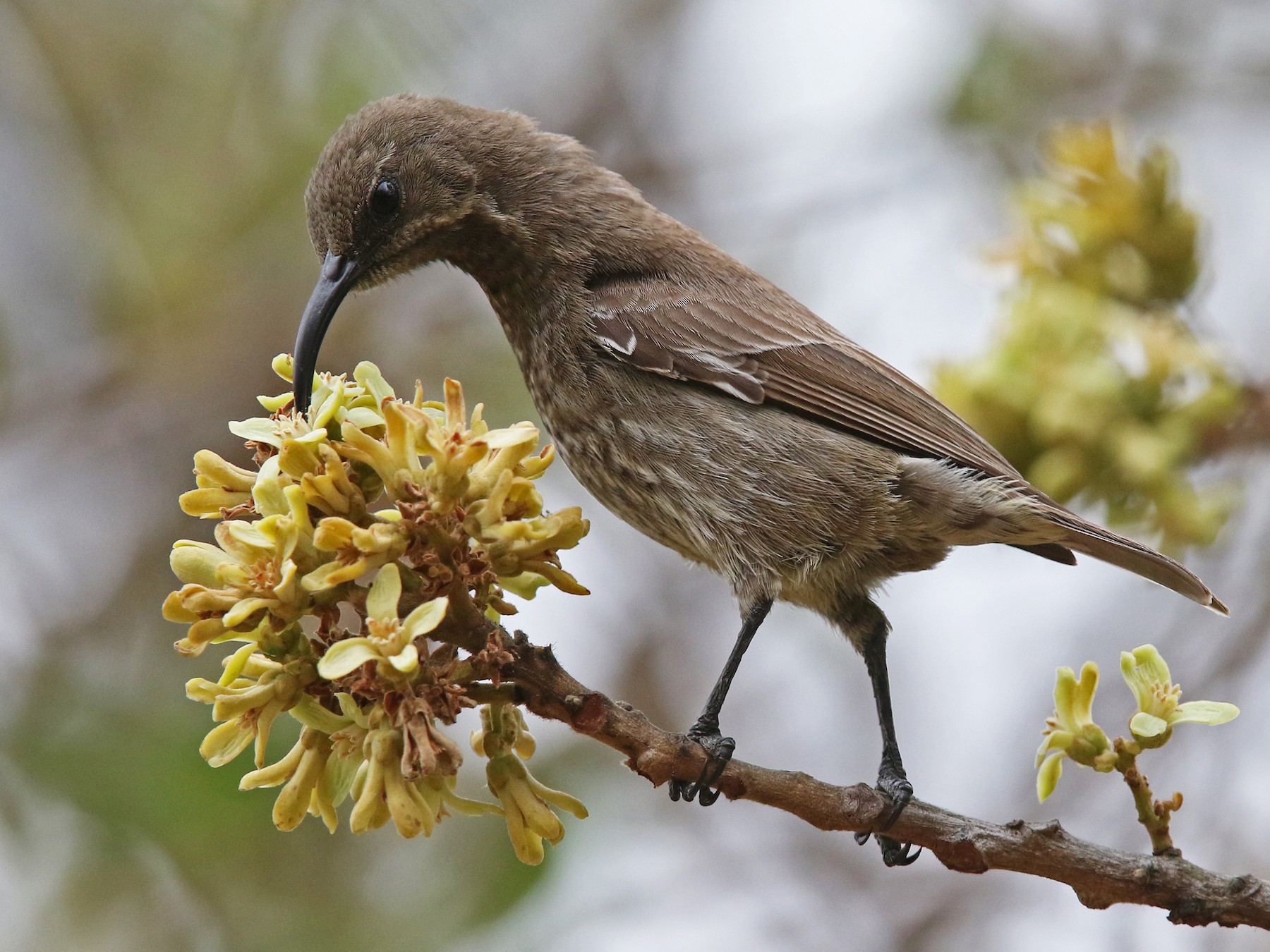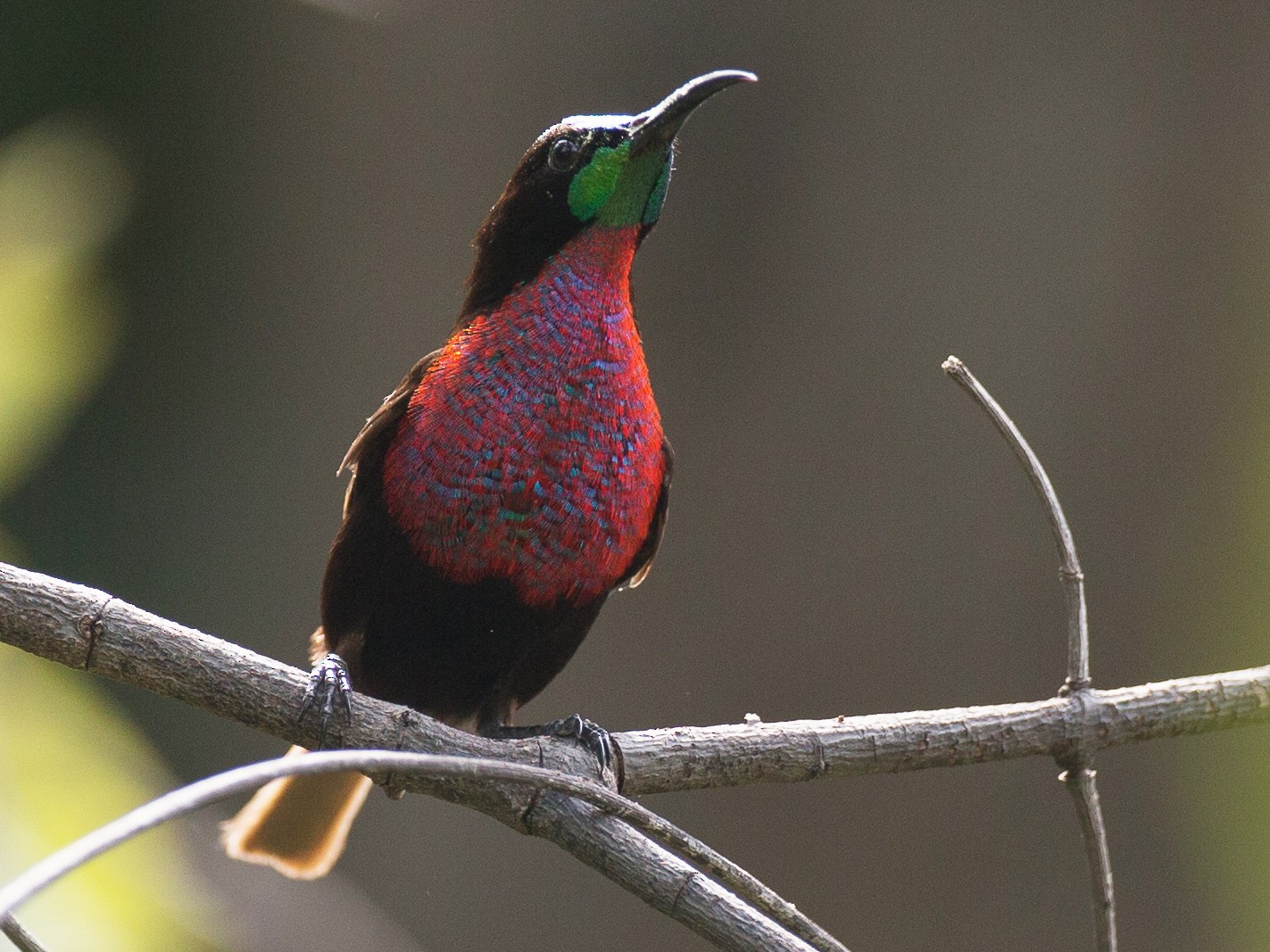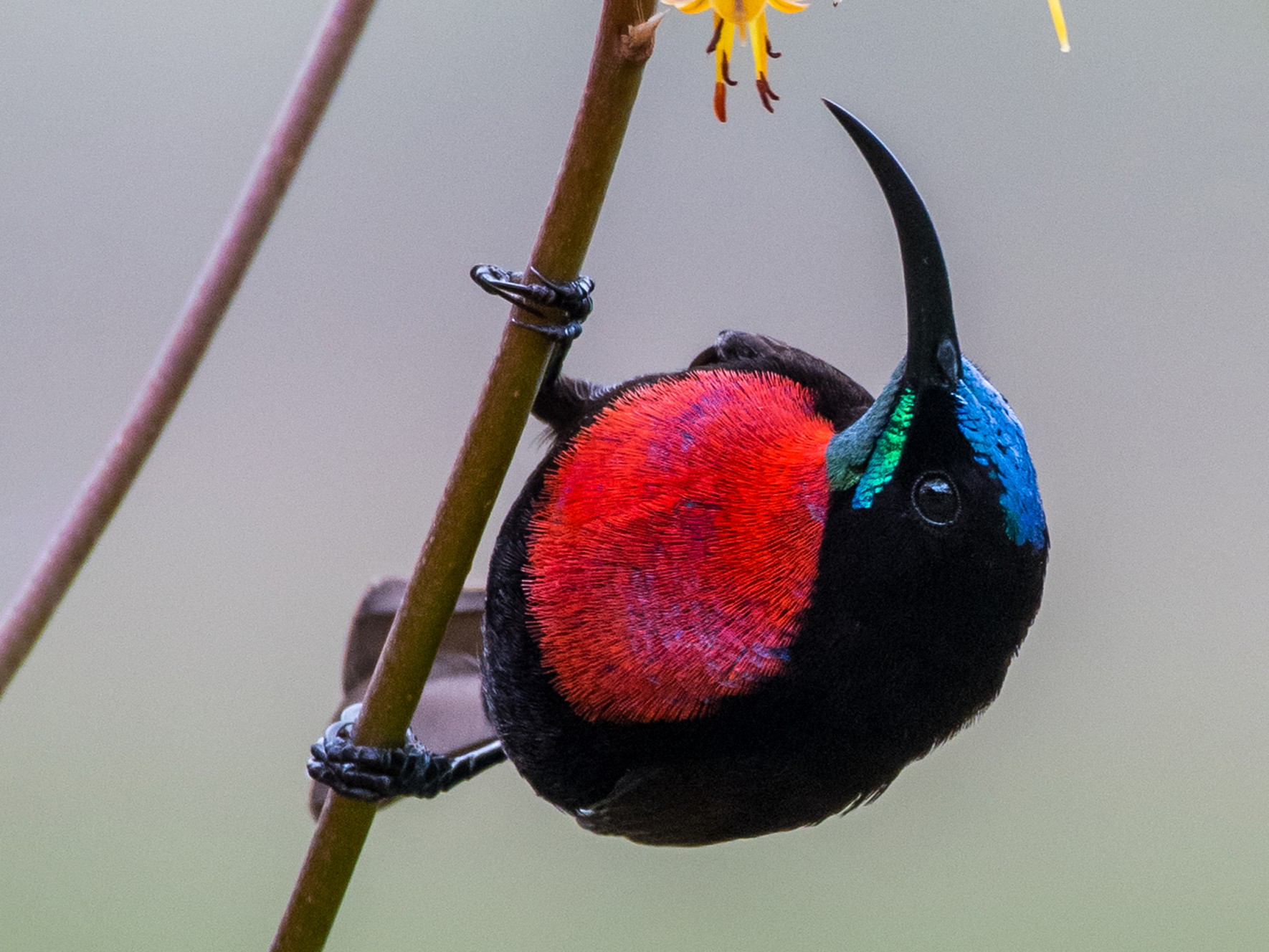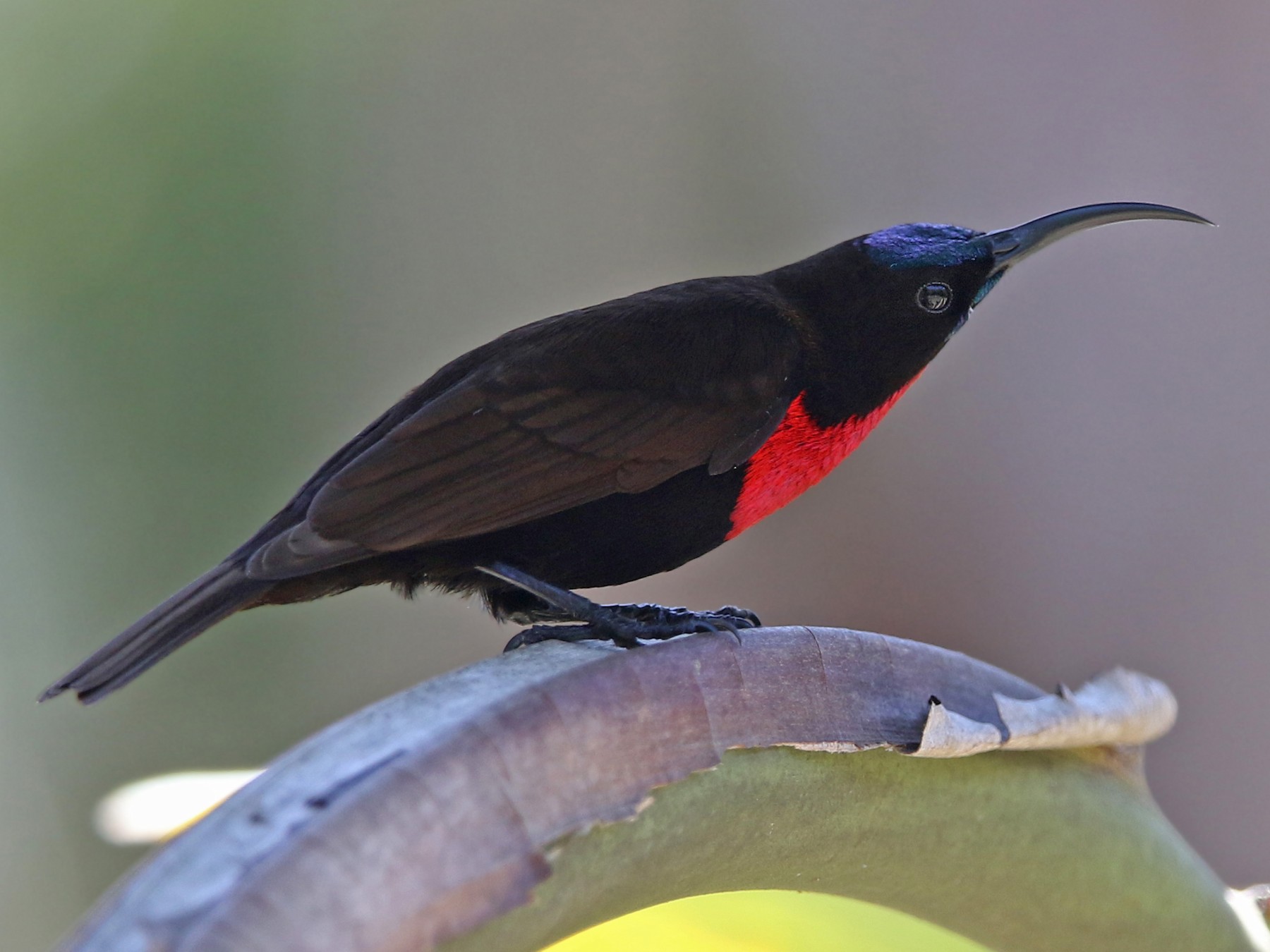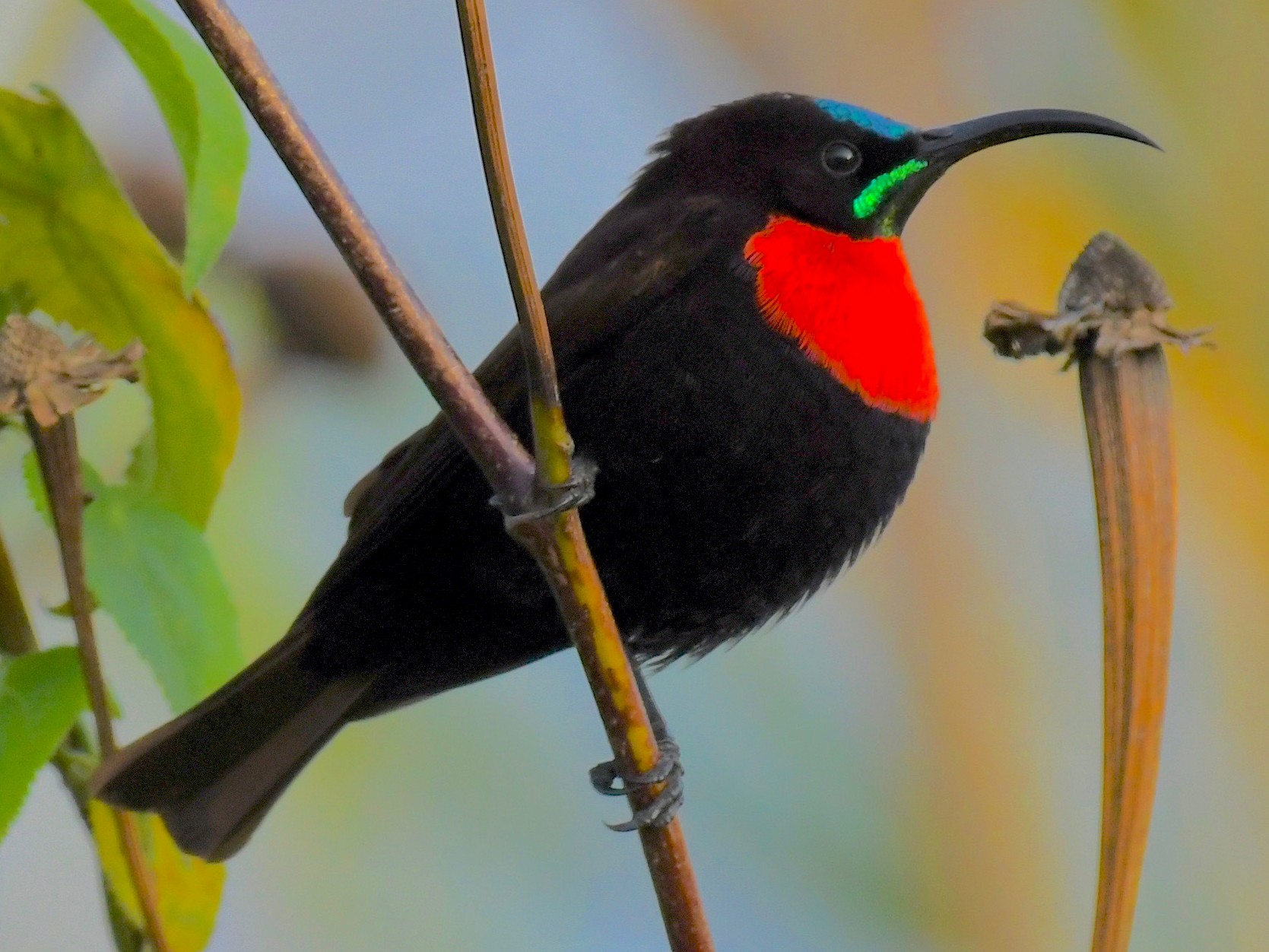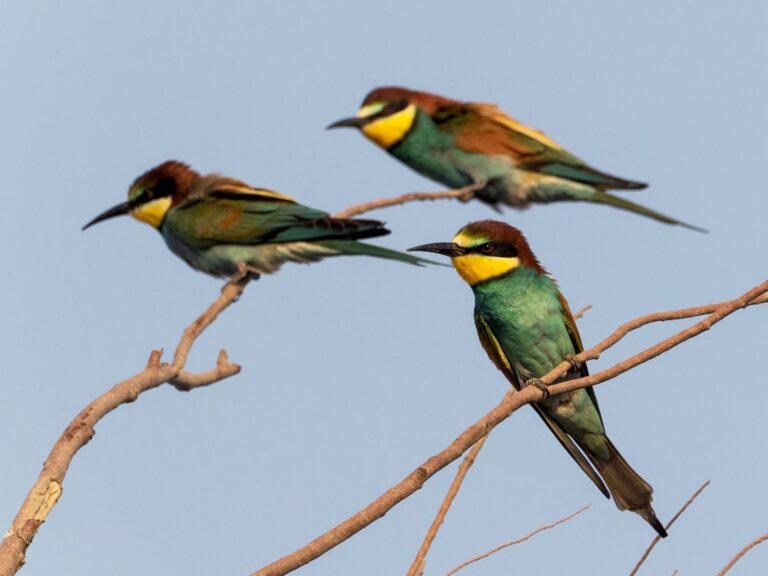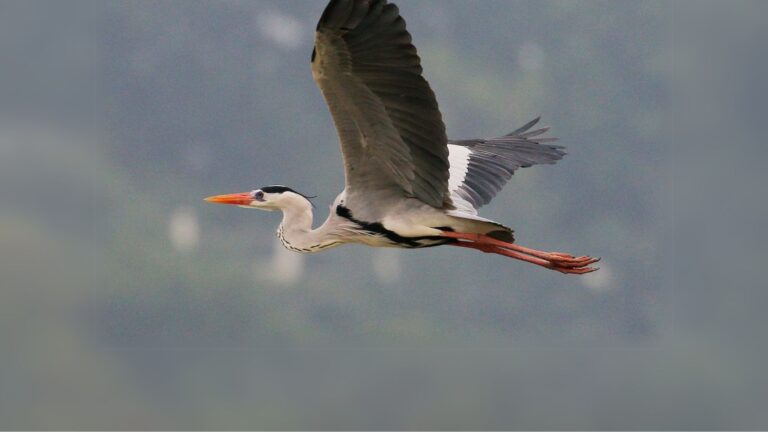Scarlet-chested Sunbird Stunning Colors and Fascinating Behaviors Unveiled
Taxonomy and Classification
The Scarlet-chested Sunbird comes from a lively bunch of small, brilliantly colored, nectar-loving birds native to Africa. Its scientific details and bold looks make it easy to pick out from other sunbirds.
Genus and Species
Belonging to the genus Chalcomitra, this sunbird stands out for its flashy feathers and its knack for sipping nectar. Its full scientific name is Chalcomitra senegalensis, and it sits within the Nectariniidae family—home to all sunbirds and spiderhunters.
Researchers spot Chalcomitra senegalensis by its DNA and body features. You’ll find these birds scattered widely across Sub-Saharan Africa: West, Central, East, and Southern regions all host them.
In places like Zimbabwe, up to 100 Scarlet-chested Sunbirds can gather in a single area, showing just how well they adapt to different places (widespread adaptability). Scientists classify this species by comparing it with other Nectariniidae, especially those with overlapping territories.
Distinctive Features
Male Scarlet-chested Sunbirds really live up to their name, flashing a bright scarlet patch on their chests. The rest of the male’s feathers are glossy black with a shiny green crown—hard to miss, honestly.
Females and youngsters look a bit drabber, mostly grey-brown with paler bellies. Both males and females have those slightly curved, slender bills, perfect for reaching nectar inside flowers.
This sunbird isn’t the tiniest, but it’s not huge either—usually about 13 to 15 centimeters long. If you’re flipping through a field guide, you’ll spot the differences from similar sunbirds, especially thanks to the male’s iridescent feathers. The shimmer in the male’s plumage isn’t just for show—it helps attract mates and makes sure they’re recognized by the right crowd.
Distribution and Habitat
The Scarlet-chested Sunbird pops up all over Africa, and its choice of home says a lot about how flexible it is. You’ll find it from thick forests near the equator to open savanna fringes.
Geographic Range
It’s pretty widespread in sub-Saharan Africa. Big, steady populations live in West, Central, and East Africa—think Nigeria, Kenya, Tanzania, Ethiopia, Angola. Down south, you’ll catch them in South Africa, Namibia, and Mozambique.
People spot these birds in river woodlands, along streams, and even in city outskirts, especially near water or at the edge of forests. Recent mapping work has pinpointed them in the Zambezi riparian forest in Namibia and South Africa’s Eastern Cape, showing just how varied their hangouts can be.
Preferred Environments
Scarlet-chested Sunbirds do well in all sorts of places, but anywhere with plenty of flowering plants and trees is a win. They’re at home in open woodlands, river thickets, forest edges, and even suburban gardens. They’ll try out disturbed or farmed areas too, as long as there’s food.
In equatorial regions, they stick to thicker forests, but in South Africa and Namibia, they’re more into open areas like peri-urban riparian zones and bushveld. The real deal-breaker? Nectar sources and good perching spots. That’s what shapes their territory and, honestly, their success at raising chicks.
Diet and Feeding Behavior
Scarlet-chested Sunbirds eat both nectar and small bugs. Their feeding style and food preferences fit their needs—and their role in the ecosystem is actually pretty cool.
Nectar Feeding
Nectar is a big part of what keeps these birds going. You’ll often see them at flowers with long, tube-shaped blooms, especially aloe. Their slender, curved bills and brush-tipped tongues make them great at getting nectar, whether they’re hovering or just perched.
They’re busiest feeding early in the morning and late afternoon, when nectar is richest. These sunbirds can get feisty, defending the best flowers from rivals. And while they’re at it, they end up pollinating plants—brushing against pollen as they drink.
In spots where flowers are everywhere, they zip around quickly, grabbing sips from plant to plant. You’ll often hear them calling out during feeding, maybe marking their turf or chatting with neighbors (comprehensive guides to sunbirds mention this).
Key nectar plants:
- Aloe species
- Hibiscus
- Wild shrubs with tubular flowers
Insect and Spider Consumption
Besides nectar, these sunbirds eat insects and spiders, especially when they’re raising chicks. Protein is a must for growing young, after all.
They pick bugs off leaves and branches or sometimes dart out to catch them in mid-air. You’ll find them eating beetles, ants, flies, caterpillars, and the odd spider. They seem to go after insects more in the afternoon, or when flowers aren’t offering much nectar.
Chicks get almost nothing but soft-bodied insects and spiders. That protein boost helps them grow fast. Studies—even ones on sunbirds in captivity—show that live food is key for raising healthy young (importance of live food).
Breeding and Life Cycle
Scarlet-chested Sunbirds have some pretty interesting breeding habits, putting a lot of energy into building nests and raising chicks. Their approach really depends on their environment and what their young need.
Mating and Monogamy
During the breeding season, these sunbirds usually pair up—monogamous for a while, at least. Both male and female get in on the courtship, showing off with fluttery flights, calls, and, of course, the male’s flashy red chest. It’s all about strengthening that pair bond and showing they’re ready to mate.
Once they’ve paired, they stick together for the season. Timing is everything—they often mate when rains bring plenty of food for chicks. Studies on other sunbirds back this up: breeding usually lines up with local weather and food cycles (seasonal breeding and molt constraints).
Nest Building and Eggs
The female does most of the nest building, weaving a snug, oval-shaped nest from grass, fibers, and spider silk. She hangs it from slim branches, hidden in leaves to keep it safe from predators. Inside, she lines it with softer stuff for warmth.
She’ll lay one to three eggs per clutch. Incubation takes about two weeks, and the female mostly handles that while the male stands guard. After hatching, both parents feed the chicks a mix of nectar and insects. That teamwork really boosts chick survival, especially in unpredictable habitats (sunbird breeding behaviors in captivity).
Conservation and Environmental Impact
The Scarlet-chested Sunbird covers a lot of ground in sub-Saharan Africa, showing up in gardens, forests, and savannas. Its numbers, ecological role, and the challenges it faces all matter for conservation and for understanding its place in nature.
Conservation Status
Right now, the Scarlet-chested Sunbird (Chalcomitra senegalensis) sits comfortably in the Least Concern category. Surveys in Nigeria, Uganda, Zimbabwe, and elsewhere keep finding healthy populations in parks, reserves, and even city green spaces. In Uganda, long-term monitoring shows they’re common and widespread—no big declines so far.
Still, it’s smart to keep an eye on them. Urban growth and forest loss can affect local numbers, but so far, nothing’s pushed the species toward real trouble. Conservation folks suggest regular tracking to spot any changes. Protecting habitats helps this sunbird and plenty of other species too (bird composition study in Nigeria).
Role in Biodiversity
These sunbirds are important pollinators, flitting from flower to flower and helping plants reproduce. Because they live in so many types of habitats, their presence often hints at a healthy ecosystem. They even show up in cities, which says something about their resilience.
By pollinating native plants, Scarlet-chested Sunbirds help keep food webs and plant communities going strong. Their actions don’t just benefit flowers—other animals rely on those plants too. Their part in maintaining healthy habitats really can’t be overstated (ecological communities).
Threats and Challenges
The Scarlet-chested Sunbird faces some real hurdles, mainly habitat fragmentation and degradation. As agriculture spreads, land gets cleared, and cities grow, the bird’s breeding spots shrink or change. Even though it’s listed as Least Concern, nobody’s really watching how these changes might cause local declines—so things could get dicey if we don’t pay attention.
This sunbird isn’t tied to rivers or the coast, but it really needs healthy land with plenty of flowers. When people overuse the land or manage watersheds poorly, both nesting spots and food can dry up. Honestly, if we want to keep seeing this species around, folks need to get serious about protecting habitats and involving local communities. Skipping proper environmental impact assessments before big developments? That’s a recipe for trouble in areas where these sunbirds live.
Visual Representation and Media
Scarlet-chested Sunbirds pop up a lot in wildlife photography—both from pros and hobbyists. Their flashy feathers make them a favorite subject, but using these images means you’ve got to think about rights and how you’re sharing them.
Photography and Rights
Photos of sunbirds come with all sorts of licensing: rights managed, editorial, commercial, and royalty free. Rights managed licenses usually limit where, how long, and in what way you can use the image. Royalty free ones are more flexible—you pay once and use them pretty widely.
Photographers like Christopher Cox and Trevor Carnaby have put together some excellent Scarlet-chested Sunbird shots, both in books and online collections. If you want to post these on social media or elsewhere, make sure you’ve got the right permissions or have paid any necessary fees. Most of the time, sharing without written permission isn’t allowed—especially for editorial or educational use.
Creative and Educational Use
Artists and teachers often turn to Scarlet-chested Sunbird images for field guides, schoolwork, and digital learning. Creative folks might use them for paintings, infographics, or class projects, but they’ve got to stick to the allowed rights, especially if they’re planning to share or sell their work.
Birdwatching platforms and educational forums depend on licensed photos to help people spot these birds in real life. When using media, giving credit and following license rules matters. Teachers and students should double-check what’s allowed, especially if they’re posting online or in places like social media and nature groups.
Honestly, the rise of royalty free and open-access bird images is a win-win: more people can use them responsibly, and the original photographers still get credit.
Frequently Asked Questions
Scarlet-chested Sunbirds are nectar-loving birds with eye-catching colors, found all over parts of Africa. The way they act, where they live, and their conservation status all give a glimpse into how flexible and social they can be.
What is the typical habitat of Scarlet-chested Sunbirds?
You’ll usually spot Scarlet-chested Sunbirds in open woodlands, gardens, and savannas. They’re also happy in bushy patches and forest edges, and seem pretty comfortable in places people have changed—like parks and farmlands.
What are the identifying characteristics of the Scarlet-chested Sunbird?
The males really stand out with their bright, shiny scarlet chests, metallic green heads, and black undersides. Females are a bit more understated, with brownish backs and lighter bellies. Both have slim, curved bills made for sipping nectar.
What diet do Scarlet-chested Sunbirds typically have?
Mostly, they feed on nectar from flowers, using those specialized bills. When feeding their chicks or if nectar’s hard to find, they’ll go after small insects and spiders too.
How does the breeding behavior of the Scarlet-chested Sunbird differ from other sunbirds?
They build cup-shaped nests, usually hanging from tree branches. Their breeding style is pretty standard for sunbirds, though some reports mention they’re more flexible about where they nest—even choosing spots in areas people have changed. Egg-laying and chick-raising aren’t much different from their close relatives.
Can the Scarlet-chested Sunbird coexist with other sunbird species in the same environment?
Yes, Scarlet-chested Sunbirds often live alongside other sunbird species. In Zimbabwe, for example, folks have spotted them in gardens with several types of sunbirds, sharing food and nesting areas. There’s more detail in the garden bird survey data if you’re curious.
What are the conservation statuses of the Scarlet-chested Sunbird?
Right now, the Scarlet-chested Sunbird sits in the Least Concern category. It thrives across a wide range and seems pretty comfortable in all sorts of habitats. So far, nothing major threatens its numbers, which is honestly a relief for bird enthusiasts.
